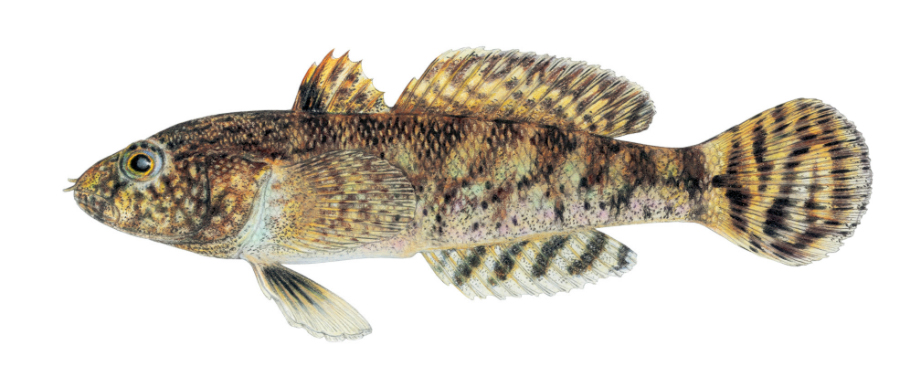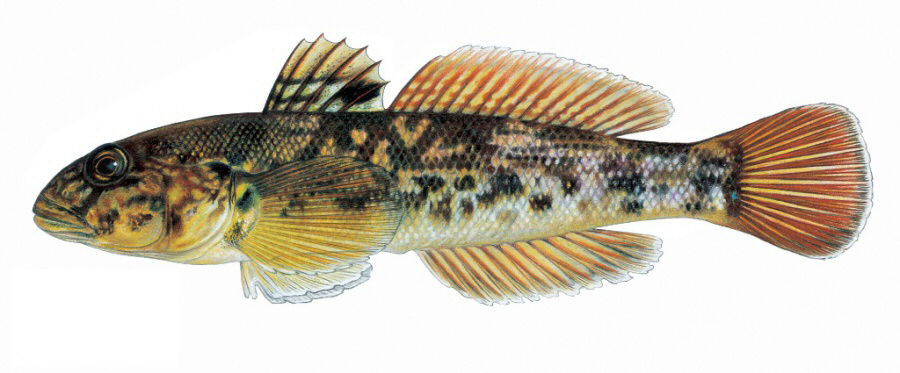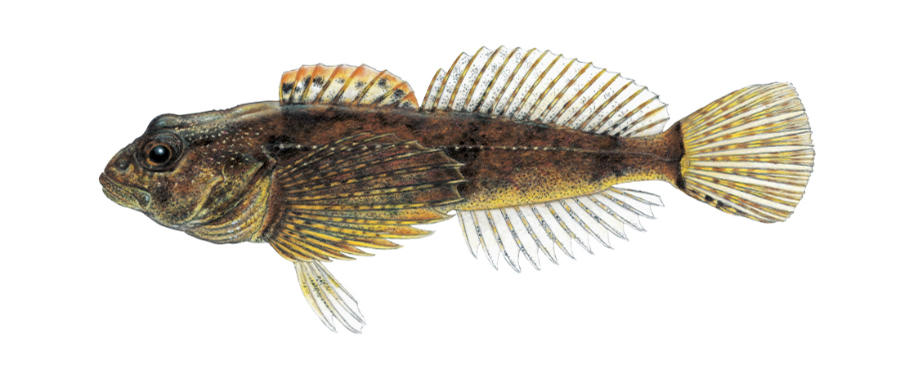Background
The Tubenose Goby is a small, bottom-dwelling invasive fish. Native to rivers and estuaries of the Black and Caspian Sea basins, it was first discovered in North America in the late 1980s in the St. Clair River, north of Windsor, Ontario. Since then, it has been found in a few locations in the Great Lakes. Researchers believe that Tubenose Goby were brought to North America in the ballast water of ocean-going ships. Tubenose Goby prefer waters near the shores of lakes and rivers, where they can hide among aquatic plants. They eat the young of bottom-dwelling fish, such as Rainbow Darters (Etheostoma caeruleum) and Northern Madtoms (Noturus stigmosus) and compete with them for their food, such as: insects, shellfish, and worms. Another invasive fish, the Round Goby (Neogobius melanostomus), was introduced to Ontario alongside the Tubenose Goby.
Range
Outside its native range, the Tubenose Goby is most abundant in the St. Clair River and Lake St. Clair. It is also found in Lake Erie and in Lake Superior in Thunder Bay, Ontario, and in Duluth Harbor, Minnesota. The fish has occasionally been sighted in the St. Lawrence River near Kingston, and in Lake Huron.
For an up to date distribution map of Tubenose Goby in Ontario, visit www.EDDMapS.org/distribution.
Impacts of Tubenose Goby
It’s not yet known how Tubenose Goby may affect native species, but scientists are concerned about the possible long-term effects of the fish’s choice of habitat and diet.
- Tubenose Goby eat bottom-dwelling fish and compete with them for food.
- The fish may also eat and compete for food with other fish species that spawn in near shore areas of lakes and rivers.
- While Round Goby eat invasive zebra and quagga mussels, Tubenose Goby do not.
To prevent the spread of this invasive species, the Ontario government has banned the possession of live Tubenose Goby, including its use as a baitfish.
How to Identify Tubenose Goby
INVASIVE
Tubenose Goby
(Proterorhinus semilunaris)
Details
- No black spot.
- Fused scallop-shaped fin.
- Body is grey, light brown, olive or tan with black or reddish-brown mottling on the back.
- Small nostril tubes extend over the upper lip.
- Fully scaled body
INVASIVE
Round Goby
(Neogobius melanostomus)
Details
- Prominent black spot on first dorsal fin.
- Fused scallop-shaped pelvic fin.
- Body is brownish or olive in colour, with dark brown spots. Except in reproducing males, the body and fins are almost completely black.
- Nostril tubes do not reach the upper lip.
- Fully scaled body.
What You Can Do
- Learn how to identify Tubenose Goby and how to prevent the spread of this unwanted species.
- Never buy or use Tubenose Goby as bait. It is against the law to use Tubenose Goby as bait or to have a live Tubenose Goby in your possession.
- Don’t put any live fish into Ontario lakes, rivers or streams.
- If you have any information about illegal importation, distribution, or sale of Tubenose Goby, report it immediately to the MNR at 1-877-847-7667, toll-free any time, or contact your local Ministry of Natural Resources and Forestry office during regular business hours. You can also call Crime Stoppers anonymously at 1-800-222-TIPS (8477).
- If you’ve seen a Tubenose Goby or another invasive species in the wild, please contact the toll-free Invading Species Hotline at 1-800-563-7711, visit EDDMapS, or search for the ‘Invasive Species in Ontario’ project on iNaturalist.org to report a sighting.
Gallery
OFAH/MNR Invading Species Awareness Program. (2021). Tubenose Goby. Retrieved from: www.invadingspecies.com.
This factsheet may be reproduced for non-commercial purposes.
Header photo and fish illustrations © Joe Tomelleri




